As Summer 2014 starts to break onto the horizon, one of the first big launches of the year sees Mariko and Jillian Tamaki working together for a new graphic novel, This One Summer, published this week through First Second.
A story of two girls, Rose and Windy, This One Summer is a tale of growing maturity, of dealing with the oncoming threat (or pride) of adulthood. It’s also a gorgeous, lush piece of work, with the creative team completely in-sync as they go about creating a memorable, surprising holiday experience for the two characters.
To find out more about the book – which I’m purposely not explaining to you in too much detail because I don’t want to spoil anything – I spoke to Mariko, who writes, and Jillian, who pencils; about the book what it’s like to work together, and how This One Summer came about.
Steve: What made you want to tell this specific story? What was it about the idea, or characters, which really struck you as something you wanted to explore?
Mariko: I’ve always wanted to do a summer story. Plus the cottage is such an interesting space. It’s not home, but you’re with your family. It’s your vacation spot but it’s someone else’s every day. The rules are totally different because you’re not at school. Even the landscape, you know? With the trees and the lake and the stars and everything. It’s a little magic.
Steve: This marks, I believe your first work published through First Second. How did they come to be involved with the project?
Jillian: I’ve actually been in informal contact with Mark since around 2004. Before First Second even had a name or before we had published Skim or I’d moved to New York. He had seen some of the illustrations that I had done for the New York Times Op-Ed––some of my first jobs ever after graduating art college––and thought my work seemed suited for comics. I was only making minis during that time.
During one of my trips to New York to visit my boyfriend (who was attending SVA), we met for lunch and had been in touch on-and-off since that time.
Steve: When you first start work on a new project, do you find that you start off focusing on the story, or focusing on characters, or both?
Mariko: For me it starts with character. I do a lot of writing (random stuff) to figure out who the characters are before I get started on a script. I write a lot of letters and just stream of conscious poems and whatnot to figure out what the characters think of each other, what they’re afraid of, stuff like that. I think it’s essential to understand who you’re writing. If you understand your character, you understand what they will do when your plot happens.
Steve: The story follows two girls, Rose and Windy, two childhood friends whose families go on holiday together every summer. It would be tempting to assume that elements of the story draw off some of your own experiences growing up…. would that be fair, though? Does the story draw on any elements of autobiography for either of you?
Mariko: I went to a cottage a lot like this one, but the characters in this book are very different than the people that populated my summers as a kid. I really tried to pull in a diversity of kids and adults and situations to tell this story, a lot of which were more inspired by people I’ve met as an adult than the people I knew when I was a kid. It’s a lot easier to observe kids as an adult than it was as a kid.
Jillian: I didn’t grow up going to the cottage. My family didn’t live near Mariko’s; we were on the other side of Canada where we don’t really have that type of thing. What I was more pulling from was the emotional landscape. We took a fact-finding/reference-gathering trip to Muskoka, the area depicted in the book, before we started and that was the most influential thing, because I wanted the book to be very sensory.
Steve: The two girls feel like fully-realized teenagers of the moment, and their dialogue feels contemporary and authentic. How do you get into the minds of the characters, and put words in their mouths? Can it be difficult sometimes to write younger characters?
Mariko: I do a lot of teaching in high schools and I check in (aka eavesdrop) on kids all the time. I think the thing is less to try and write/talk like a young person, and more to try and remember where that character is in his/her life. In a way the adults can be harder to write, especially in this case, because their words are so much more thought out and calculated.
Jillian: My job is to support the dialogue, and add depth to what is being said. There’s actually quite a bit of latitude there because obviously a word or sentence can have infinite meanings depending on the timing, body language, expression, etc. Thankfully, Mariko is not too precious about the words; I can skew them different ways and she’s cool with it. She is an excellent collaborator.
Steve: Tonally, how did you approach the story, both in the writing and pencilling? Despite the young lead characters, you address a number of more adult issues and concerns with a real streak of honesty.
Jillian: Well, thanks. That’s a real compliment and something we hope to achieve. Neither of us, for better or worse, approaches a story with a particular demographic in mind. Mariko has a knack for pinpointing social zeitgeists, I think.
There are three distinct groups of people in the story: the two little kids, the townie teens, and the adult parents. To return to your question, I didn’t try to worry so much about “will a kid get some of this adult stuff?” I think a reader will interpret the three groups differently depending on his or her age– hopefully it creates a textured experience.
Steve: This One Summer feels like an exploration on adulthood or coming of age – with one girl pushing away from adulthood and the other moving towards it, and both looking at their parents from new perspectives. Would you say that the nature of “adulthood” is perhaps one of the core themes and interests of this story?
Mariko: I think this book is about adulthood but from the perspective of kids. I’ve started describing the book as anthropological research of adulthood conducted by kids. Which makes sense, because adults have such a huge impact on kids. You’re basically at the mercy of the adults around you when you’re young. Also you’re fully aware you’re supposed to BE an adult at some point, which makes them worthy of study.
Jillian: Adolescence is the time when you stop taking everything at face value, including your own parents.
Steve: How do you plan out the structure of a long-form work like this? Do you work on specific scenes you want to hit at certain points in the story, and then work backwards and forwards from them, or do you write in a relatively chronological style?
Mariko: Typically I start with the characters and I have a sense of the main turning points going into it, then I just try to work it day by day.
Jillian: Mariko and I edited a lot during the sketch phase. Much more than Skim.
Steve: Jillian, I believe you’ve said in prior interviews that you chose to have your art reflect the style of vintage manga. What motivated that decision? What do you think the style brings to this story?
Jillian: No, the art style does not reflect manga. Just the purple-y tone of the ink, which seemed to be prevalent in manga from the 60s – but I chose it because I thought it’d feel warm and unusual (and cool). I don’t consider manga a huge influence on my work (but there is some Miyazaki in there). The drawing in This One Summer is pretty workhorse-y in that I can capture a degree of realism, which was important to the story, but it’s also fast. I would not want to do a 360 page book in a put-on style!
Steve: At what point do you start storyboarding or pencilling the story? Does it tend to happen as the story is being written – allowing for moments where you decide to space out a scene or beat, and so on – or do you finish the script and only then start pencilling?
Jillian: Mariko scripts, then I sketch the thing out, and we went back and forth a lot. The story changed a bit after the sketches. But I don’t add a ton more than what’s in there. The constraint is fun.
Steve: How do you both find the creative process with one another, in general? Do you think being family makes it easier to work together and compromise when you disagree – or can it actually, at times, make it harder to create?
Mariko: I’m not sure if we have a familial connection to these kinds of stories. We do seem to have a similar sensibility around character and story. Maybe it comes from having similar dads.
Jillian: Mariko is a great collaborator, like I said. Not sure it has anything to do with being family.
What else do you have coming up, following the release of This One Summer? Do you have any future plans to work together again?
Mariko: At the moment I’m editing my next YA book (fiction, not a comic) and prepping a few new projects.
Jillian: Probably a collection of my webcomic, SuperMutant Magic Academy. Another not-announced mini-project. My Adventure Time episodes will come out! Illustration stuff.
As for working together: maybe!
–
Many thanks to Mariko and Jillian for their time. Thanks also to Gina Gagliano for arranging the interview. You can find Mariko on twitter here, and Jillian here. This One Summer was published yesterday, and should be available at bookstores and comic stores near you.


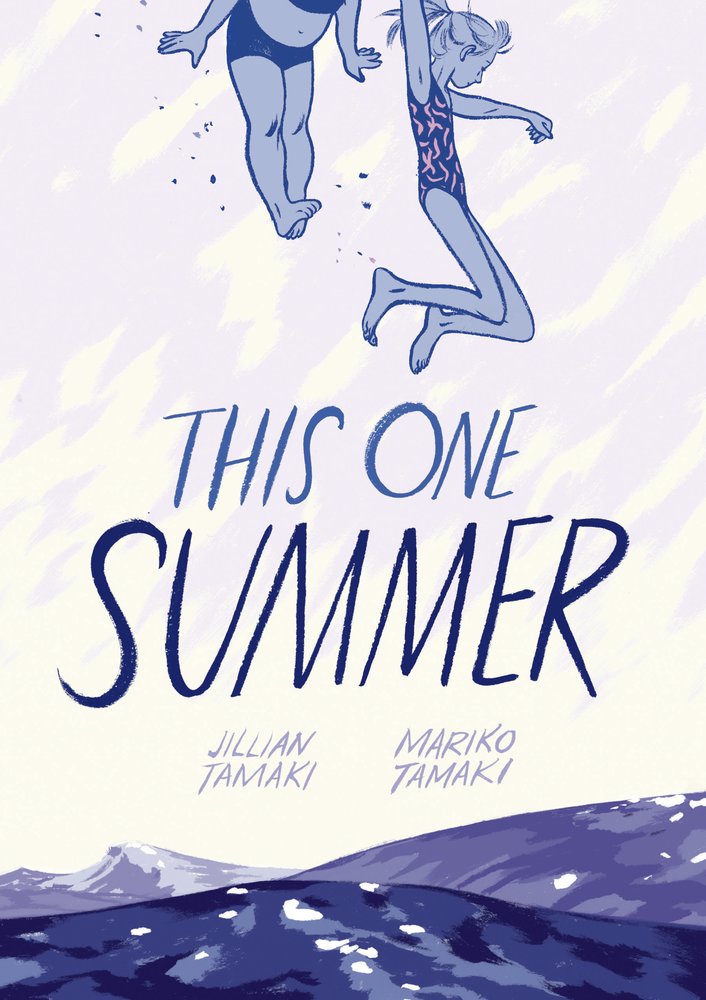
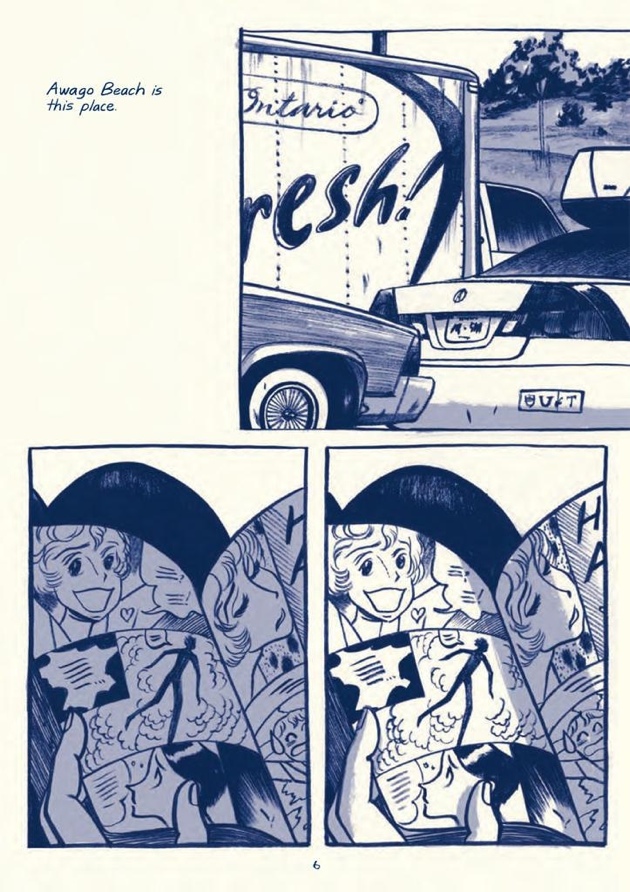
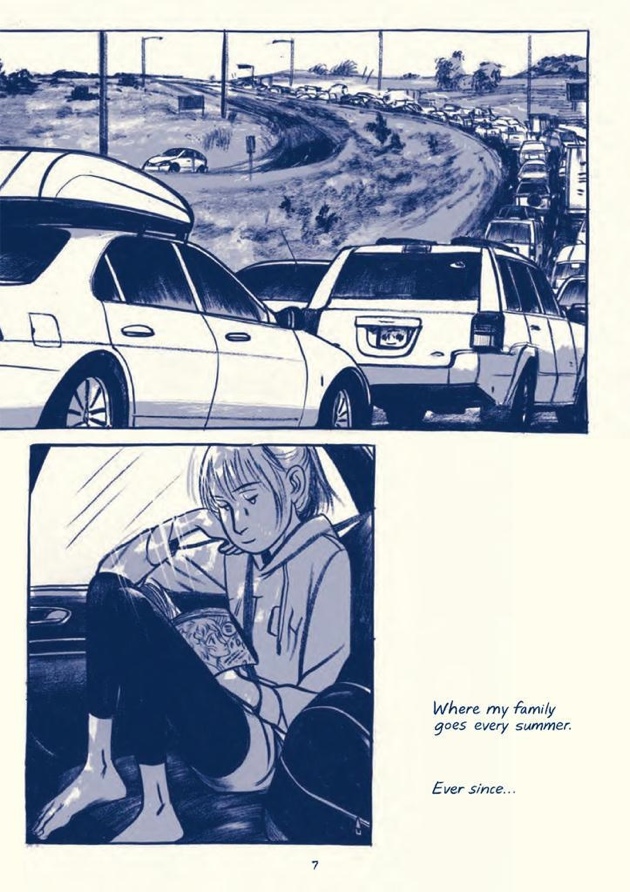
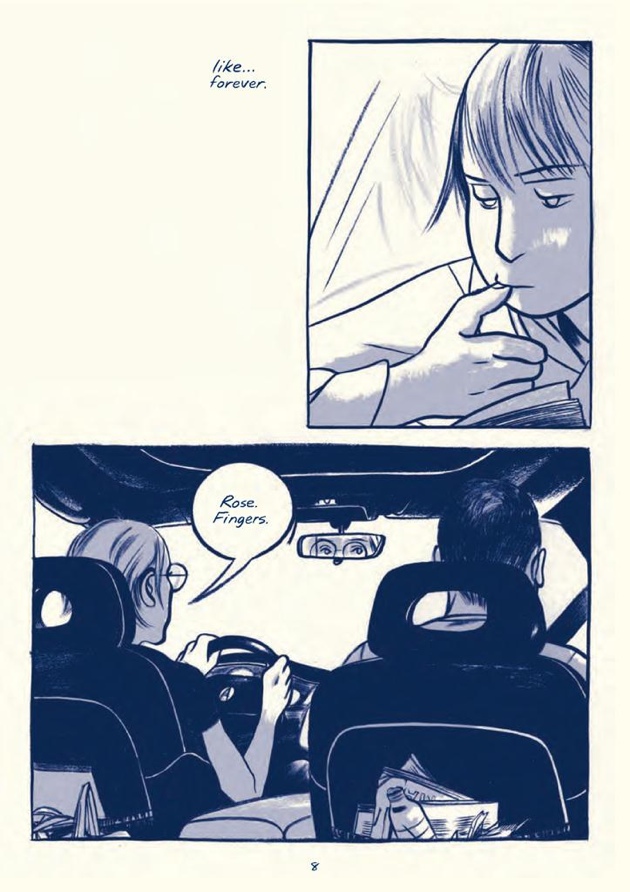
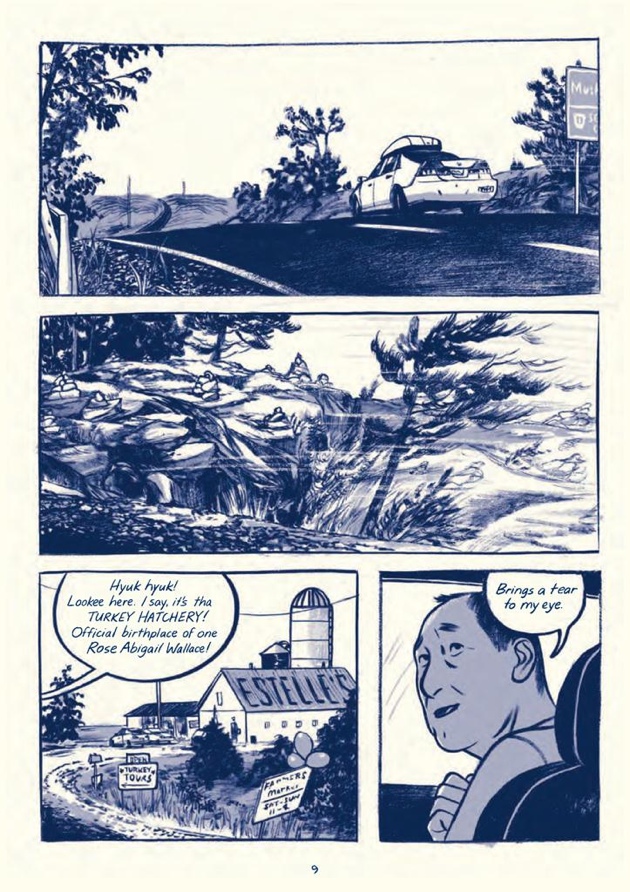
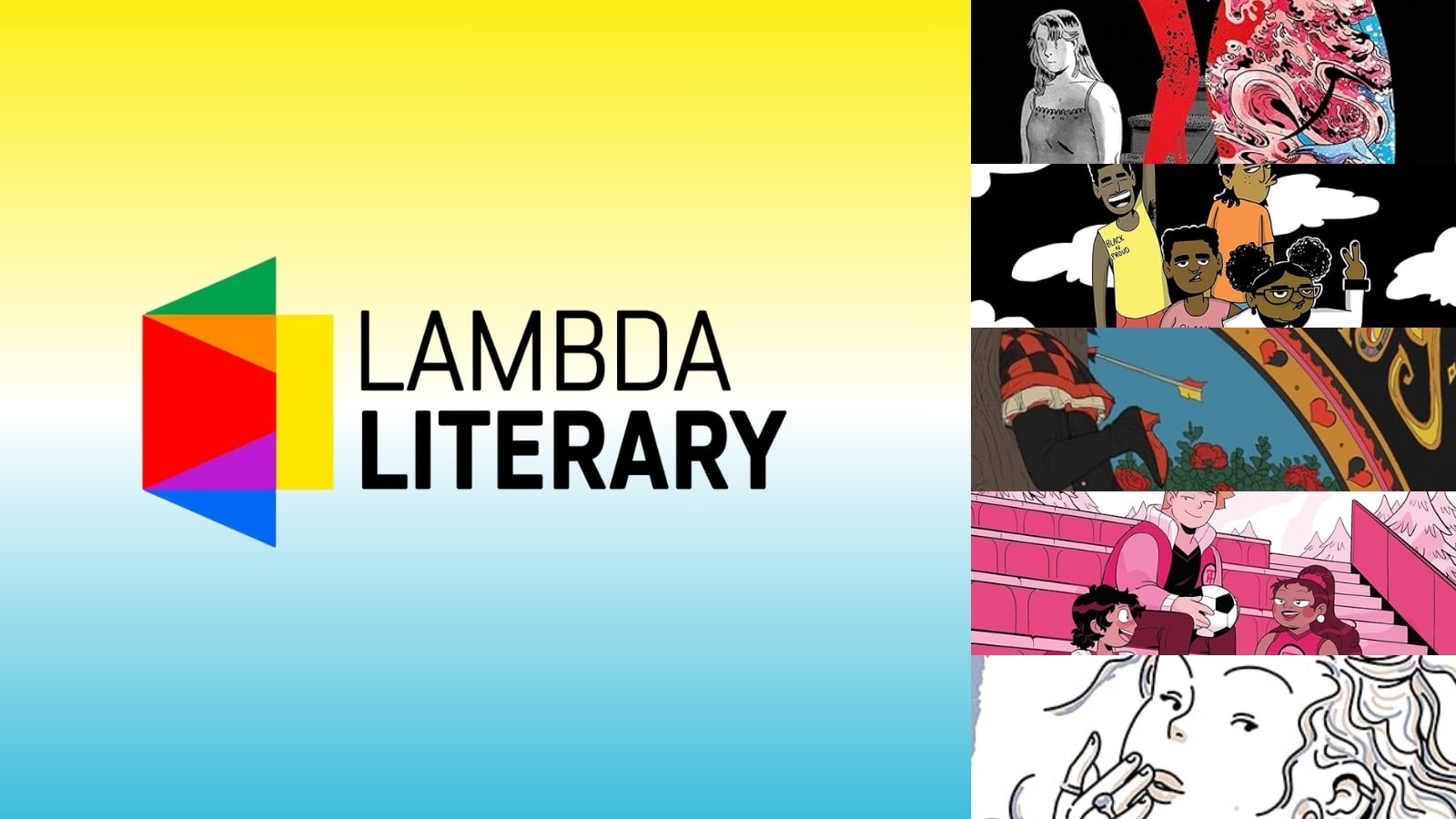




What’s to spoil? It’s a straight up simple story.
This is flat-out one of the best graphic novels I have read in years. The Tamaki team have done an amazing thing with this. World class comics.
Read Skim, the previous book by the Tamakis, almost by chance and was blown away to the extent that I finished it, put it down, thought about it and read it through again the next night. Beautiful art and incredibly well-observed about the contrasting interior and exterior lives of teenagers, capturing that feeling of everything being a big deal and nothing really mattering. Looking forward to this.
Comments are closed.